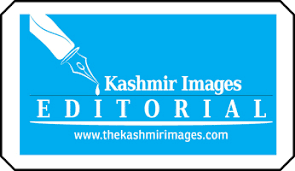During a recent incident on July 23 at Srinagar’s Shri Maharaja Hari Singh (SMHS) Hospital allegations were made that due to medical negligence a patient lost his life and taking law into their own hands, the attendants of the deceased patient roughed up some doctors resulting into strong protests by the doctors resulting into the closure of certain sections of the hospital. Following the incident, the health department has ordered a probe and asked the probe panel to submit its report within 15 days.
The incident may be probed, the responsibilities may be fixed and suggestions may be made to eliminate the risk of any such incidents in the future but the point is what is the message that this incident conveys. Without going into the debate whether it was medical negligence or just the pain of passing away or one’s dear one that resulted into ugly scene. the is that peoples’ trust into our medical institutions is very fragile and that is why such incidents are reported from length and breadth of Jammu and Kashmir many times a year. This reality demands an urgent need for comprehensive reform.
The healthcare sector in Jammu and Kashmir has made significant progress, with increased budget allocation and completed health projects. However, challenges persist, and sustained efforts are needed to improve healthcare services, particularly in rural areas. The system is grappling with systemic challenges that undermine its ability to serve huge number of patients effectively. Despite notable strides, such as the operationalization of AIIMS Jammu in August 2024, AIIMS Awantipora failing several deadlines, indicates that all is not well. Despite increased budget allocation, health infrastructure remains plagued by inadequate funding, staffing shortages, and uneven access to quality care.
It is unreasonable to say that governments, that be, have done or are doing nothing. Government initiatives like the Ayushman Bharat scheme and the addition of 2,000 medical seats signal progress toward universal health coverage and improved medical education. Primary Health Centres (PHCs) are being upgraded to Sub-District Hospitals (SDHs) to meet Indian Public Health Standards, aiming to deliver quality care closer to communities. However, thousands of posts for doctors and paramedics remain vacant in entire UT and a huge number of positions remain unfulfilled at SKIMS. Worst hit are the rural areas of the UT.
Fact of the matter is that J&K’s health sector requires a multi-pronged approach. The government should speed up the process of filling the vacancies and should incentivizing rural postings. To reduce the burden on tertiary facilities, the government should invest in modern equipment and specialist training at district hospitals. While schemes like AB-PMJAY SEHAT and new medical colleges are commendable, without addressing the basic systemic inefficiencies, these initiatives may not serve much purpose. The system has to evolve into a patient-centric, equitable model that prioritizes accessibility and quality.

